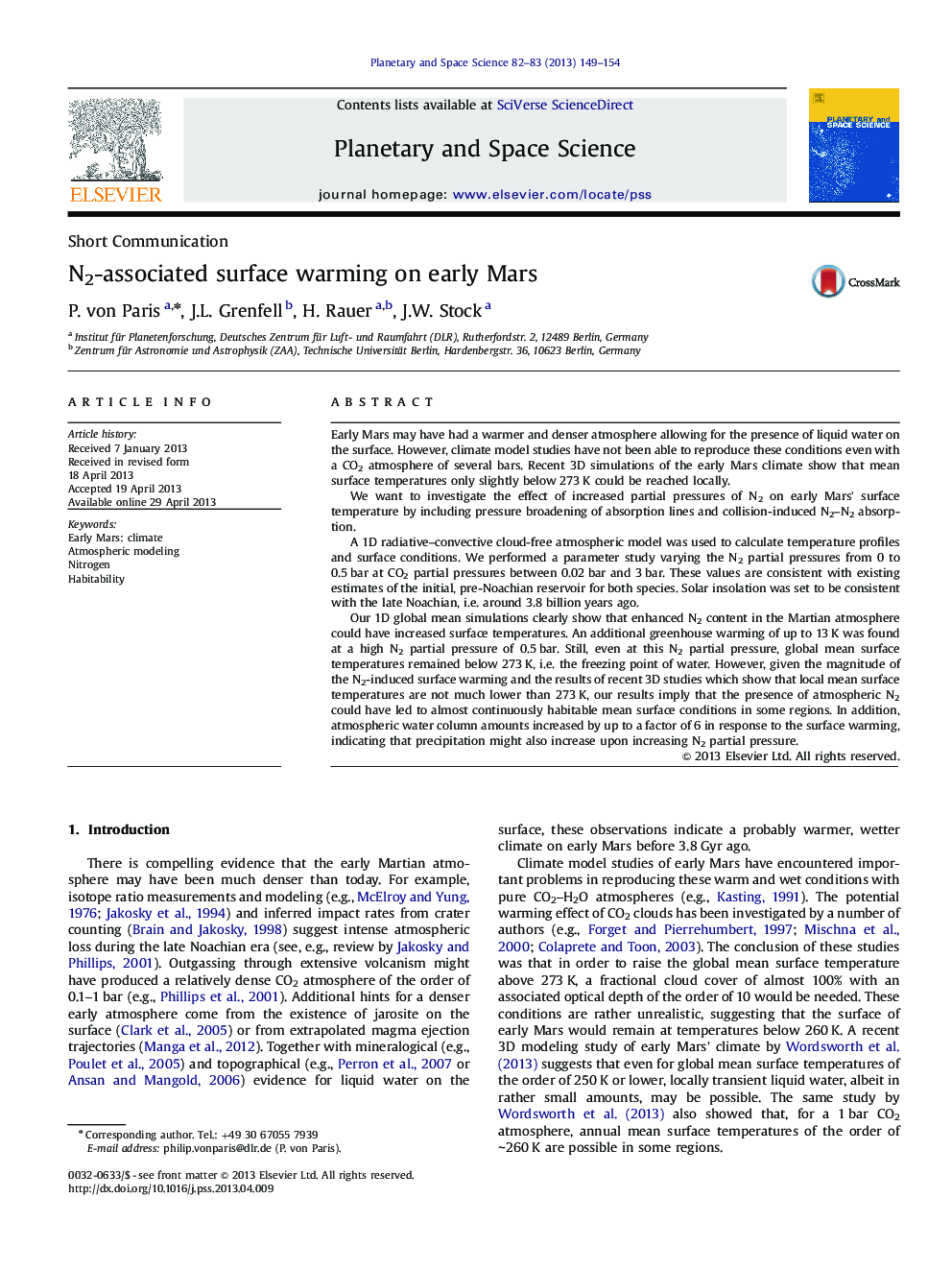| کد مقاله | کد نشریه | سال انتشار | مقاله انگلیسی | نسخه تمام متن |
|---|---|---|---|---|
| 1781265 | 1523953 | 2013 | 6 صفحه PDF | دانلود رایگان |

• We investigate the effect of N2 on early Mars surface temperatures.
• The presence of N2 provides up to 13 K of surface warming.
• CO2–H2O–N2 atmospheres could provide locally habitable surface conditions.
Early Mars may have had a warmer and denser atmosphere allowing for the presence of liquid water on the surface. However, climate model studies have not been able to reproduce these conditions even with a CO2 atmosphere of several bars. Recent 3D simulations of the early Mars climate show that mean surface temperatures only slightly below 273 K could be reached locally.We want to investigate the effect of increased partial pressures of N2 on early Mars’ surface temperature by including pressure broadening of absorption lines and collision-induced N2–N2 absorption.A 1D radiative–convective cloud-free atmospheric model was used to calculate temperature profiles and surface conditions. We performed a parameter study varying the N2 partial pressures from 0 to 0.5 bar at CO2 partial pressures between 0.02 bar and 3 bar. These values are consistent with existing estimates of the initial, pre-Noachian reservoir for both species. Solar insolation was set to be consistent with the late Noachian, i.e. around 3.8 billion years ago.Our 1D global mean simulations clearly show that enhanced N2 content in the Martian atmosphere could have increased surface temperatures. An additional greenhouse warming of up to 13 K was found at a high N2 partial pressure of 0.5 bar. Still, even at this N2 partial pressure, global mean surface temperatures remained below 273 K, i.e. the freezing point of water. However, given the magnitude of the N2-induced surface warming and the results of recent 3D studies which show that local mean surface temperatures are not much lower than 273 K, our results imply that the presence of atmospheric N2 could have led to almost continuously habitable mean surface conditions in some regions. In addition, atmospheric water column amounts increased by up to a factor of 6 in response to the surface warming, indicating that precipitation might also increase upon increasing N2 partial pressure.
Journal: Planetary and Space Science - Volumes 82–83, July 2013, Pages 149–154